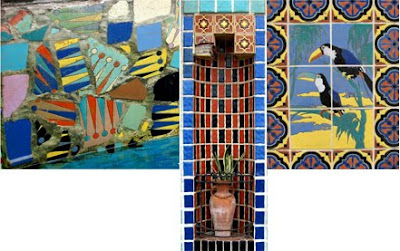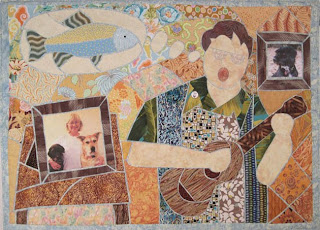Hewson quilt from the Delaware Historical Society Collection
Nearly every state has done a quilt search. A few are still in progress, among them Delaware's. It's a small state (they have 3 counties; Kansas has 100), but important to quilt history because it was once a colony with a long quiltmaking tradition. It's great that they are posting pictures of what they've discovered in recording quilts.
Check out their web page by clicking here.
http://www.delawarequilts.org/
On the left click on Quilt Images, then pick one of the documentation days, for example, DV-3 to see a slide show.
Two interesting things I found in looking at the various webpages connected with the project:
---A previously unpublished Hewson quilt in the collection of the Delaware Historical Society, shown above. Does this makes 31 on the list of quilts with fabric from 18th-century Phialdelphia printer John Hewson? (For more on Hewson fabrics see my blog entry:
http://barbarabrackman.blogspot.com/2009/11/hewson-textiles-and-cuestas-lists.html )
And see a press release featuring the Delaware quilt by clicking here:
http://history.delaware.gov/news/press/quilt_doc_history.shtml
---A quilt dated 1806, also in the collection of the Delaware Historical Society. Any quilt date-inscribed before 1830 is quite unusual. Something dated that early is a real document. Here's the thumbnail image of it. Click here to see a better picture:
http://history.delaware.gov/collections/documentation_quilts.shtml
Click on the folder showing the state collection then the image of the quilt. You'll see it's signed on the reverse: "Catharine Collins Hur Work August the 7 1806". It was made in Smyrna, Delaware.
The best thing is: It's a diamond star, what we might call a Star of Bethlehem and they might have called a Rising Sun. There isn't another dated example of this design until the 1830s, so this quilt is an important piece of pattern history.
These pictures I have pirated from the Delaware sites are fairly minimal so here are some more pictures of the Rising Sun, new and old, that I've found on the web or in my email.
Supposedly from 1832, New Jersey, online auction
Dated 1876?, online auction
Mid-20th-century, online auction
A 2009 reproduction seen at Taylors Outback blog:
http://taylorsoutback.wordpress.com/2009/10/02/our-2009-quilt-show-part-ii/ Reproduction by Roseanne Smith, Lawrence Kansas





















































